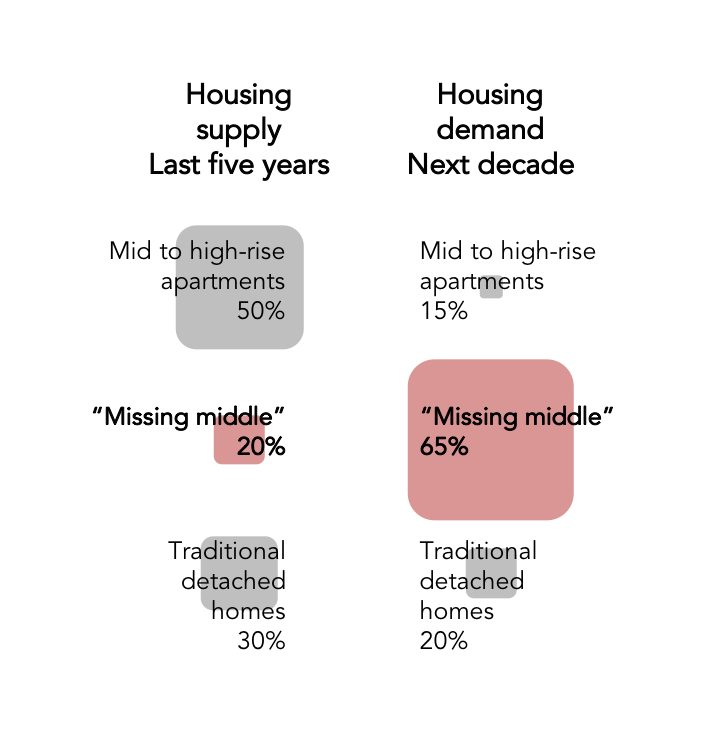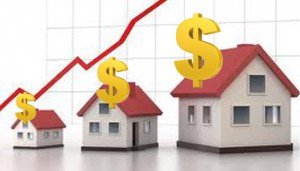What does the future hold for property?
For mine demographics shape almost everything.
Future demographic shape
If that is true, what does Australia’s demographic shape look like over the next decade. 
The first table shows that baby boomers, who were helping drive generic house price growth over the past two decades, are now starting to downsize and/or retire.
As a result, the size of both the downsizing and retirement housing market will grow in size over the next decade.
Also coming through are more first home buyers.
This segment is expected to see the largest growth in the coming decade.
High overseas migration – whereby the average age of a new overseas migrant is 29 years – means many more potential first home buyers.
Past and forecast household buyer type
| Household buyer type | Last decade Annual change |
Next decade Annual change |
Change | ||
| No. | % | No. | % | No. | |
| Young renters | 29,000 | 23% | 14,000 | 9% | -15,000 |
| First home buyers | 7,000 | 6% | 29,000 | 20% | 22,000 |
| Upgraders | 28,000 | 22% | 18,000 | 12% | -10,000 |
| Downsizers | 36,000 | 29% | 47,000 | 32% | 11,000 |
| Retirees | 12,000 | 10% | 26,000 | 18% | 14,000 |
| Aged | 14,000 | 11% | 14,000 | 9% | 0 |
| Total households | 126,000 | 100% | 148,000 | 100% | 22,000 |
Some comments
Most aging baby boomers look to downsize/retire in their local area.
But most are not that interested in trading in their detached home for a tight mid-to-high rise apartment.
A ‘middle ground’ product is really wanted.
Better still, is one which can accommodate a relative, grandchildren, visitors, a tenant and in due course, a carer.
First home buyers often need assistance to help pay the mortgage. Many now take in a tenant.
My Housing Demand Model
Our modelling suggests that over the next decade more housing that fits between a small apartment (often downtown and in large, soulless complexes) and traditional detached homes will be needed.
This housing is often, these days, described as the “missing middle”.
See the schematic below.

More detail
Breaking this demand down further, our work suggests that the demand for housing that caters for sharing is very high – up to 25% – over the next decade.
At present, less than 5% of Australia’s existing housing stock successfully caters to this market.
See the second table for more detail.
Next decade by dwelling type
| Dwelling type | Single occupancy | Multi-occupancy | Total demand |
| Detached houses on land > 400m2 | 20% | 10% | 30% |
| Detached houses on land < 400m2 | 15% | 5% | 20% |
| Townhouses/villas/terraces/Plexes | 15% | 5% | 20% |
| Apartments | 15% | 5% | 20% |
| Age-related care | 10% | 10% | |
| Total demand | 75% | 25% | 100% |
End note
Looking forward, I believe that many Australians will be forced to compromise on their housing.
This is already happening in many locales.
And if I am right – what is often labelled as the “missing middle”these days – should better weather the storm.
To that end, multi-occupancy property is looking more promising rather traditional housing. 
This applies to owner residents as well as investors.
For investors, multi-occupancy product already shows a much higher return than most other housing types.
More people are sharing accommodation and a key to getting a better rental yield is to hold property that facilitates sharing.
For mine an astute passive investor will buy strategically for a rental return and not just buy a common property in anticipation of generic price growth.
They will also buy a property with strong owner-resident resale appeal.
This increasingly will mean a dwelling which appeals to multi-generational households.

No comments:
Post a Comment